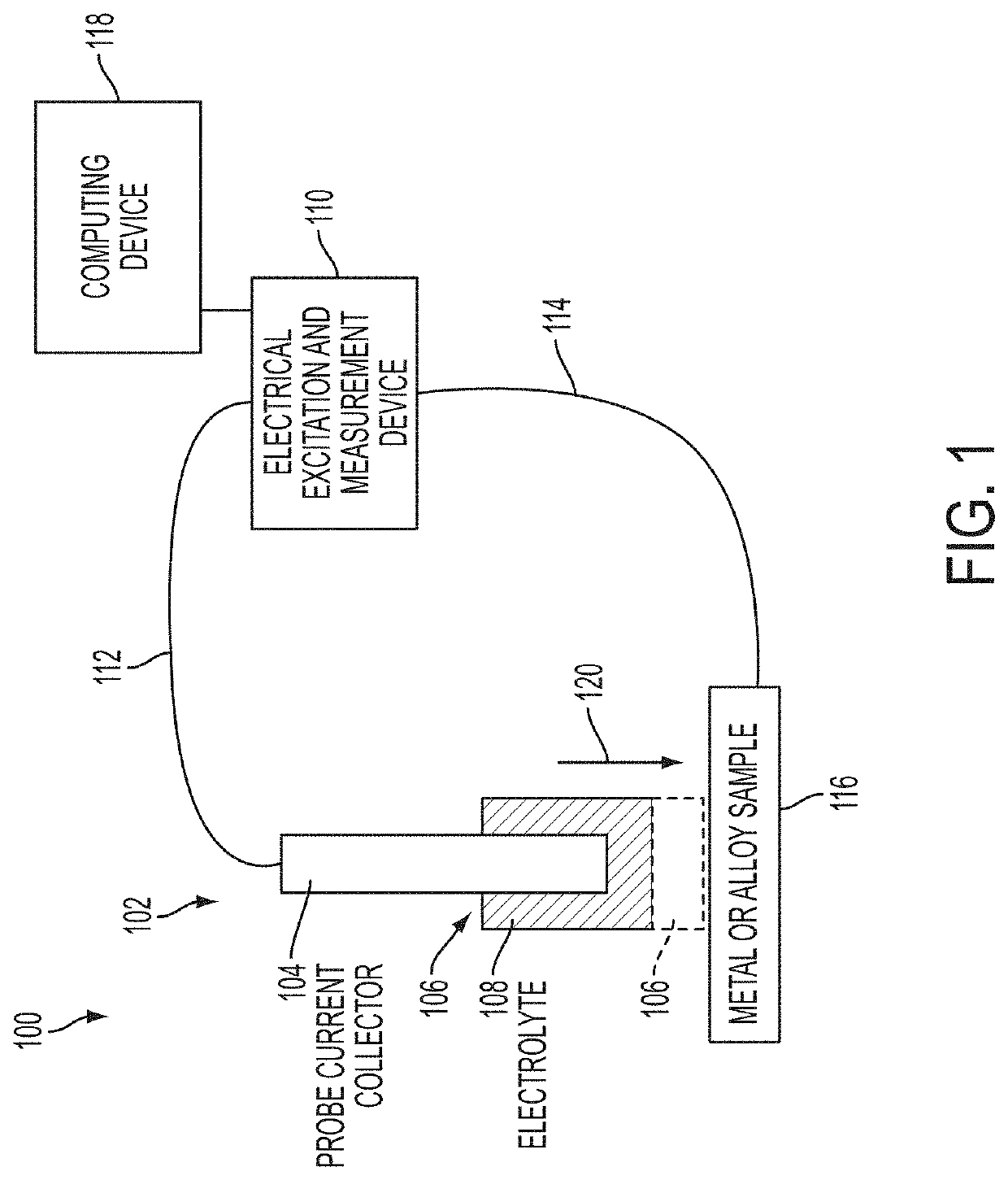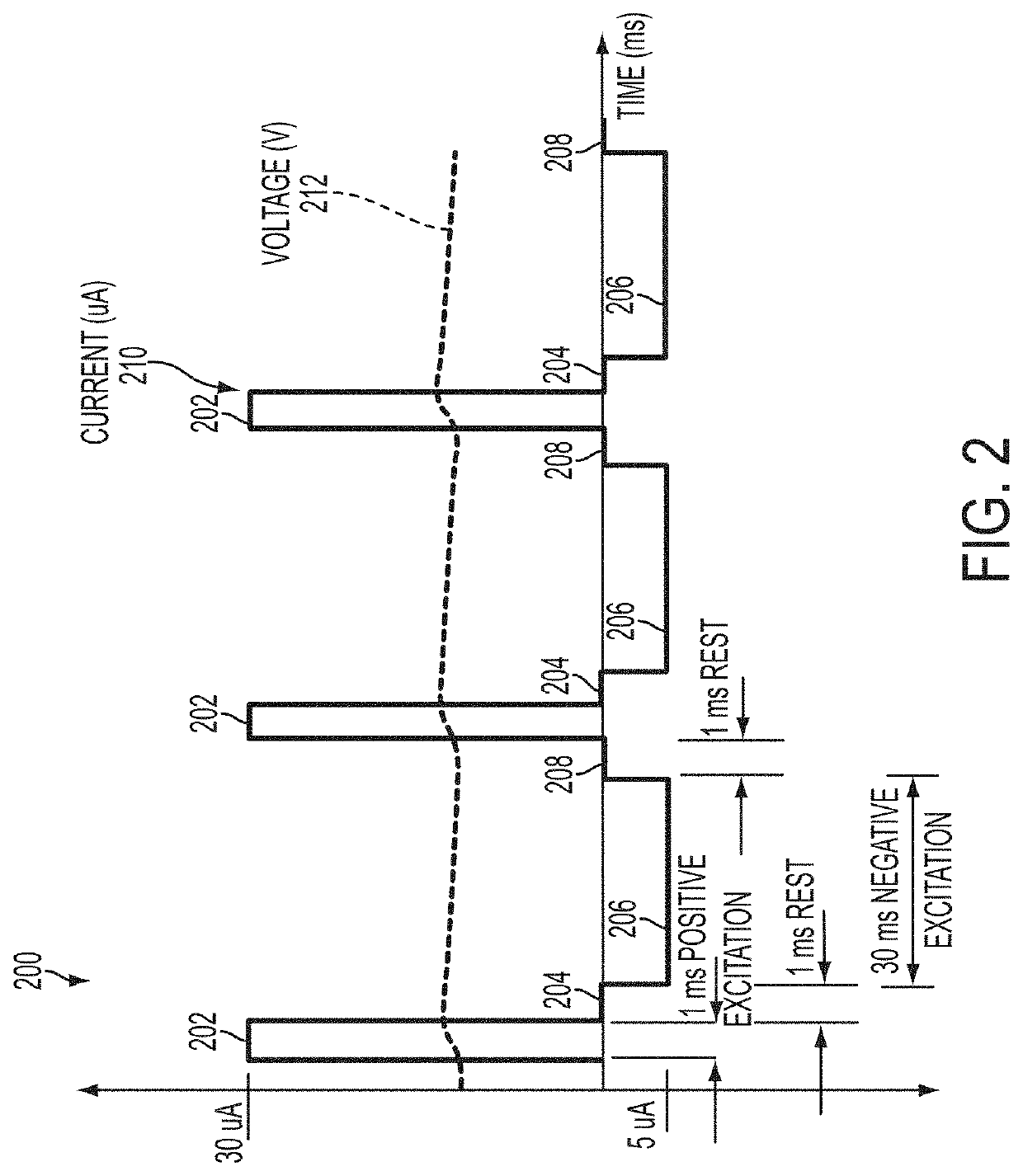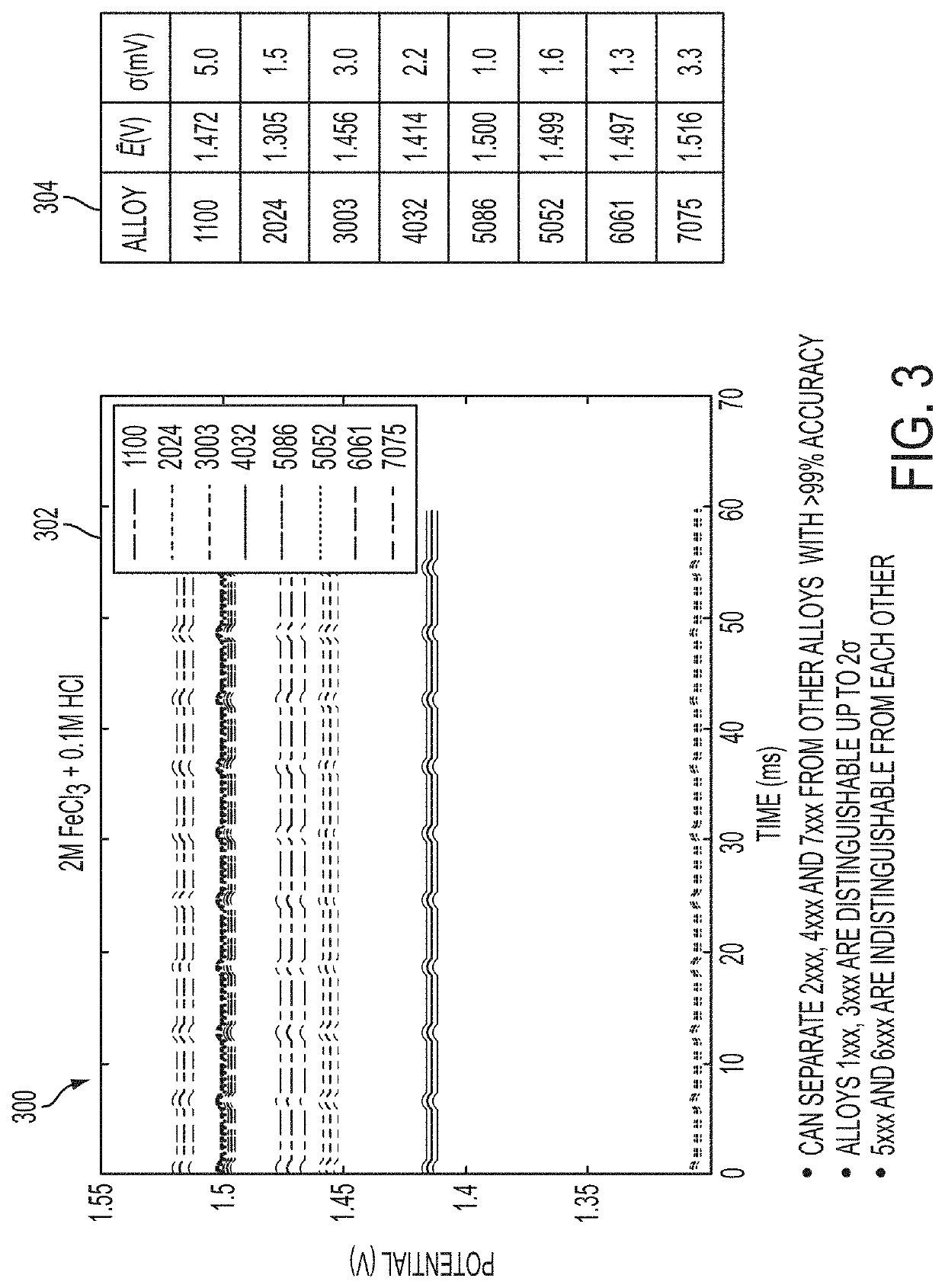Alloy identification device
a technology of alloy identification and identification device, which is applied in the direction of rare earth metal nitrates, instruments, electrochemical variables of materials, etc., can solve the problems of re-melting and re-using, reducing the value of such aggregates, and consuming energy
- Summary
- Abstract
- Description
- Claims
- Application Information
AI Technical Summary
Benefits of technology
Problems solved by technology
Method used
Image
Examples
Embodiment Construction
[0076]The present application is directed to an improved metal alloy electrochemical identification device such as disclosed in relation to FIGS. 35-51. Prior to this the following disclosure set forth certain aspects of various electrochemical alloy identification processes, as related to FIGS. 1-34.
[0077]It is initially mentioned that it in certain embodiments, electrolytes (e.g., water-based electrolytes) that are capable of a reversible redox reaction with the metal and its alloy components are employed. It is noted that a cation of such an electrolyte consists of a metal ion having at least two redox states that are soluble in the electrolyte medium. It is also noted that in certain embodiments an asymmetrical excitation charges and discharges the redox reaction rapidly and in such a manner that the net amount of electric charge (Coulombs) transacted to a sample is zero.
[0078]An arrangement 100 for testing samples consisting of different metals and metal alloys according to the...
PUM
| Property | Measurement | Unit |
|---|---|---|
| Positive current | aaaaa | aaaaa |
| Negative current | aaaaa | aaaaa |
| current | aaaaa | aaaaa |
Abstract
Description
Claims
Application Information
 Login to View More
Login to View More - R&D
- Intellectual Property
- Life Sciences
- Materials
- Tech Scout
- Unparalleled Data Quality
- Higher Quality Content
- 60% Fewer Hallucinations
Browse by: Latest US Patents, China's latest patents, Technical Efficacy Thesaurus, Application Domain, Technology Topic, Popular Technical Reports.
© 2025 PatSnap. All rights reserved.Legal|Privacy policy|Modern Slavery Act Transparency Statement|Sitemap|About US| Contact US: help@patsnap.com



